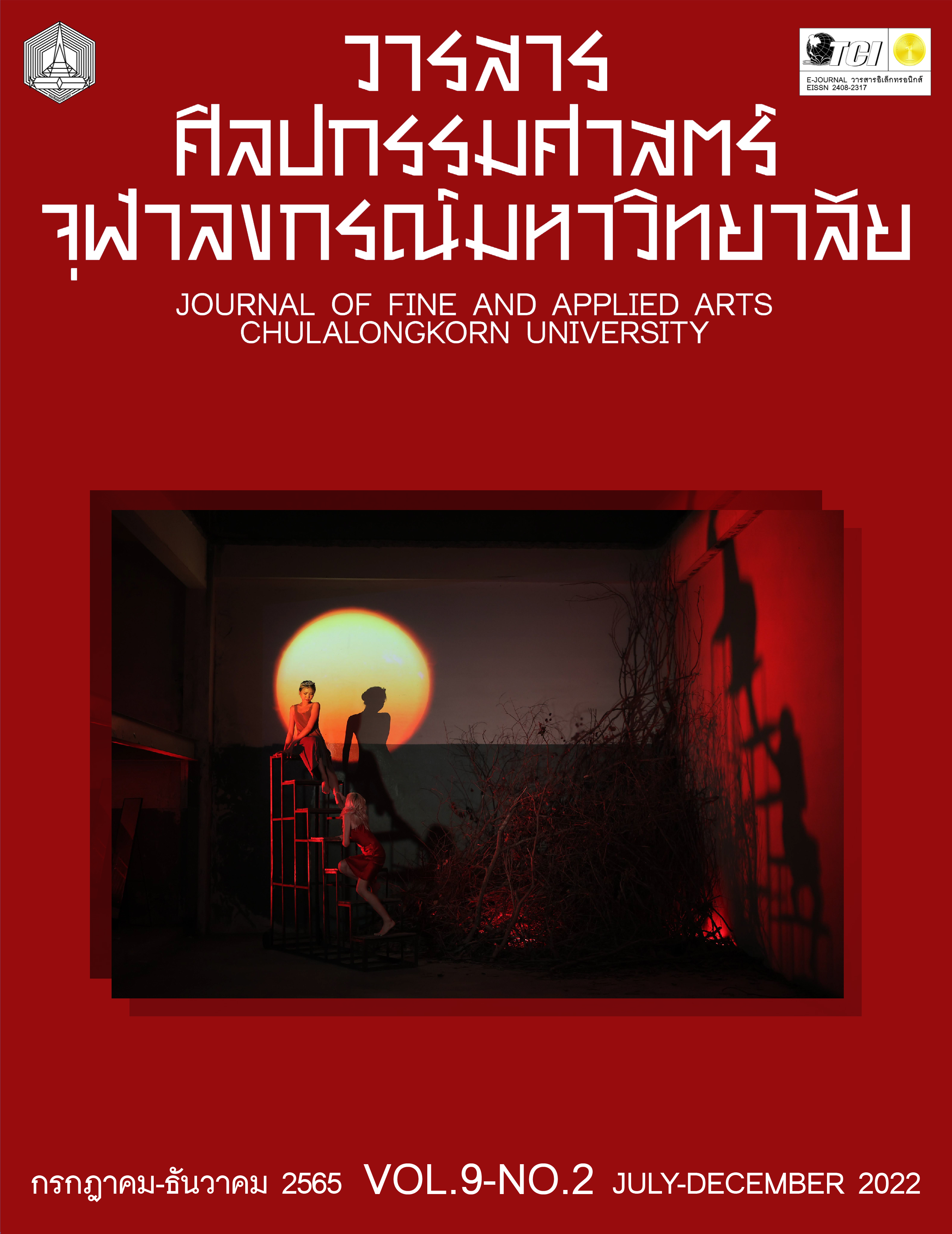THE FEMALE DANCERS PERFORMING MALE CHARACTERS IN THAI CLASSICAL DANCE
Keywords:
FEMALE DANCERS PERFORMING MALE CHARACTERS, THAI CLASSICAL DANCE, KING RAMA IVAbstract
This article aims to study the background of the male character performing by female dancers in the royal court dance from the reign of King Rama IV in the Rattanakosin era which ordinary female dancers were allowed to perform Thai Dance publicly to the Krom Silapakorn period. The study emphasizes on three aspects: the physical characteristics, dance training and body movement control. The results of the study showed that females were allowed to perform only in the royal court dance troupe since the end of Ayutthaya period after that they were allowed to perform in the general dance troupe in the King Rama IV. Thai Classical Dance by female dancers was very popular up until Krom Silapakorn period. The training of female dancers to taking male role is started from selecting the female who have a properly physical characteristic, then practicing; body bending, dancing with music and the dance language in dance and dance-drama. The important thing is the body movement control has to be presented in the male character form such as body balancing is in the upright position, shoulder is in the straight position, leg and foot postures are in a turnout position with square form, and upper torso is in the straight or tiled position to making curve by not letting their shoulders go beyond their own knees. However, the shoulder tip, knee joint and the edge of toe of the dancer must be presented in harmonious position. It must be vertically correlated in 2/3 spots: shoulder, knee and toe. Besides, the arm has to form in curve, angle or straight line in different positions, directions and levels. The highest level of arm and hands positions are not over the head and the lowest level is not below the hip. Essentially, the elbow position must be placed in angle pose away from the torso at least 1 palm hand. The training of female dancer for taking the male character in the Thai classical dance is a process of inheriting the unique Thai classical dance method that is continuously recognized worldwide until now.
References
ธนิต อยู่โพธิ์. ศิลปะละครรำหรือคู่มือนาฏศิลป์ไทย. กรุงเทพฯ : ศิวพร, 2516.
ยุวดี วัชรางกูล. “รอยย่นของโมงยาม : บันทึกสมัยพระนารายณ์ของนิโคลาส์ แชร์ แวส ตอน 2.” https://story.pptvhd36.com/@yuvadee/5ac98ad0e9933.
สมเด็จพระเจ้าบรมวงศ์เธอกรมพระยาดำรงราชานุภาพ. ตำนานละครอิเหนา. พระนคร : คลังวิทยา, 2507.
สมเด็จพระเจ้าบรมวงศ์เธอกรมพระยาดำรงราชานุภาพ. ละครฟ้อนรำ. กรุงเทพฯ : มติชน, 2546.
สุภาวดี โพธิเวชกุล. แก้ไขท่าทางในการปฏิบัติท่ารำให้ได้มาตรฐานนาฏศิลป์ไทยแบบหลวง. กรุงเทพฯ : คณะศิลปกรรมศาสตร์ มหาวิทยาลัยราชภัฏสวนสุนันทา, 2552.
สุรพล วิรุฬห์รักษ์. วิวัฒนาการนาฏยศิลป์ไทยในกรุงรัตนโกสินทร์ พ.ศ. 2325-2477. กรุงเทพฯ : สำนักพิมพ์แห่งจุฬาลงกรณ์มหาวิทยาลัย, 2543.
หออัครศิลปิน กรมส่งเสริมวัฒนธรรม. “นางสาวเวณิกา บุนนาค.” https://m.facebook.com/media/set.
อาคม สายาคม. รวมงานนิพนธ์ของนายอาคม สายาคม. กรุงเทพฯ : กรมศิลปากร, 2545.
Downloads
Published
Issue
Section
License
Copyright (c) 2022 SUPAVADEE POTIWETCHAKUL, SAVAPARR VECHSURUCK

This work is licensed under a Creative Commons Attribution-NonCommercial-NoDerivatives 4.0 International License.
ลิขสิทธิ์ของบทความเป็นของเจ้าของบทความ บทความที่ได้รับการตีพิมพ์ถือเป็นทัศนะของผู้เขียน
กองบรรณาธิการไม่จำเป็นต้องเห็นด้วยและไม่รับผิดชอบต่อบทความนั้น





